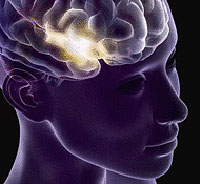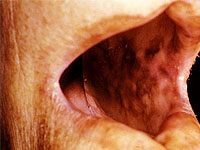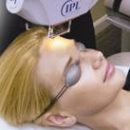What is an Incenko Cushing disease, characteristic symptoms of Cushing syndrome and the possible causes of its appearance. Diagnosis and treatment of hypercorticism according to the conclusions of endocrinologists.
Content
- Symptoms of hypercorticism syndrome
- DIAGNOSTICS AND TREATMENT OF DISEASE AND SYNDROME OF INTENKO-CUSHINE
 Cushing syndrome combines a number of diseases associated with the excessive formation of hormones of adrenal cortex (mainly glucocorticoids — Cortisol and Corticosterone). The tasks performed by these hormones include regulation of metabolism and many physiological functions. At the heart of Incenko-Cushing disease, there is a violation of the control of the hypothalamic-pituitary-adrenal system (the operation of the adrenal glands is controlled by the pituitary gland and the hypothalamus), and the symptoms are identical to the manifestations of similar syndrome. The mechanism of action is that the hypothalamus, when influencing the nerve impulses, provokes a hyperproduction of ACTH pituitary, which, in turn, is forced to produce adrenal chokes to produce corticosteroids in large quantities. Corticosteroids in excessive amounts violate the exchange processes in the human body.
Cushing syndrome combines a number of diseases associated with the excessive formation of hormones of adrenal cortex (mainly glucocorticoids — Cortisol and Corticosterone). The tasks performed by these hormones include regulation of metabolism and many physiological functions. At the heart of Incenko-Cushing disease, there is a violation of the control of the hypothalamic-pituitary-adrenal system (the operation of the adrenal glands is controlled by the pituitary gland and the hypothalamus), and the symptoms are identical to the manifestations of similar syndrome. The mechanism of action is that the hypothalamus, when influencing the nerve impulses, provokes a hyperproduction of ACTH pituitary, which, in turn, is forced to produce adrenal chokes to produce corticosteroids in large quantities. Corticosteroids in excessive amounts violate the exchange processes in the human body.
The causes of hypercorticism are ambiguous and cause many questions. But experts agree that the occasion for the development of this syndrome can be a tumor of a pituitary and non-hypospofic nature: the first contribute to the increased education of ACTH (adrenocorticotropic hormone), and the second — Ectopic Production ACTH. The cancer of adrenal glands and hyperplasia can also serve as the appearance of Cushing syndrome. No less pathogenic effects have an overdose of glucocorticoids in the treatment of certain diseases.
Symptoms of hypercorticism syndrome
For Incenko-Cushing syndrome, it is characterized by improving the level of glucose and free blood fats. Glucose increase can lead to diabetes. Consider the main symptoms of hypercorticism:
- Fat deposits in the field of person (acquires a moon-shaped form), neck, shoulders, abdomen, chest and back;
- Stria (Stretch) on the skin — stripes of red and white shades;
- an increase in appetite;
- the appearance of acne
- Slow regeneration of damaged skin sections;
- In women, there is an increased sophistication of the face, men have impotence;
- Weakness in the muscles and the development of osteoporosis;
- Arterial hypertension, possible urolithiasis, chronic pyelonephritis or sepsis.
DIAGNOSTICS AND TREATMENT OF DISEASE AND SYNDROME OF INTENKO-CUSHINE
Diagnosis and treatment of Incenko Cushing disease should be carried out under the strict leadership of the endocrinologist. The task of treatment is reduced to the normalization of the level of adrenal hormones. In the presence of symptoms of hypercorticism syndrome, a specialist appoints the necessary diagnostics:
 Determining the level of adrenocorticotropic hormone and corticosteroids through the results of hormonal blood tests and urine.
Determining the level of adrenocorticotropic hormone and corticosteroids through the results of hormonal blood tests and urine.- Re-passing blood tests and urine with special preparations (for example, dexamethasone) — «Hormonal trips».
- Determination of pituitary sizes and a detailed study of the surrounding structures using radiography, computed tomography and magnetic resonance tomography.
- Determination of the presence or absence of osteoporosis and pathological conditions of bone structures through x-ray.
Treatment of syndrome and Cushing disease implies several components: drug therapy (reception of drugs that brave ACTH hyperproduction), radiation therapy (aimed at suppressing pituitary activity), surgical intervention (tumor elimination). If these methods of treatment are unsolved, adrenalctomy is performed (adrenal removal). In addition to the treatment of the underlying disease, symptomatic treatment aimed at eliminating the signs of related pathologies is important: the reception of vitamins, antidepressants and sedatives (in cases of needed), antihypertensive drugs (with increased blood pressure), sugar drugs and T.D.









